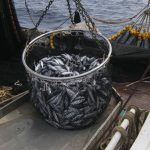Mediterranean coast is full of jellyfish for the four consecutive years. Experts believe that it is the vicious circle as larger numbers of jellyfish eat the plankton, there is less food for the fish, more and more jellyfish, less and less fish. Now the main question is how to save the coastal areas from such menace. In 2007, Spain started culling jellyfish, now other Mediterranean countries are looking at ways to protect their tourist beaches.
It is very difficult to count the exact number of jellyfish floating around the Mediterranean, as long as they are still in the sea they are almost invisible. Arthur Oosterbaan, marine biologist, the species is commonly known as the mauve stinger, which is seldom seen in the Netherlands, but is very common there. It stings and it is not nice to swim amongst. But it is not really dangerous or threatening.
Arthur Oosterbaan also said that the Mediterranean is becoming saltier because the rise in temperature means there is less fresh water in the form of rain falling in the sea. Jellyfish thrive in salt water; so more jellyfish.








